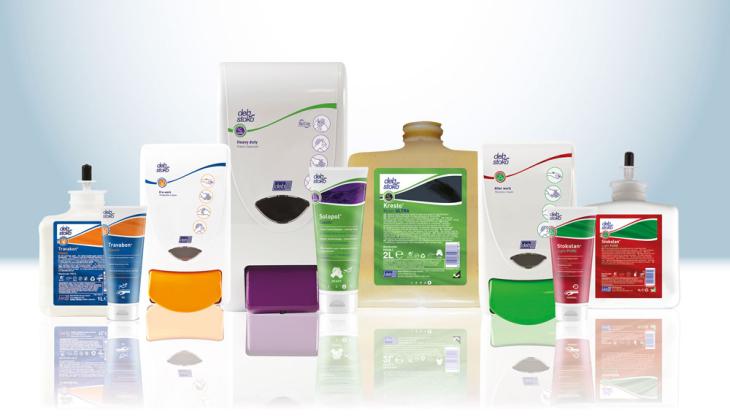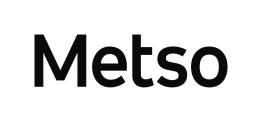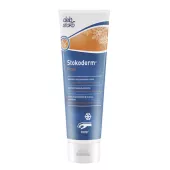Protecting hands from skin damage

Deb UK marketing director Paul Jakeway explains how mine and quarry workers can mitigate the risks
WHEN examining potential health risks to mine and quarry workers, what is often neglected is the strain that their skin, the most delicate and largest organ of the body, is placed under. The skin on the hands, in particular, can be easily damaged in the workplace by a range of hazardous substances, and by UV radiation from the sun.
Each industrial occupation presents its own risk to employees, but for mine and quarry workers, the level of risk is dramatically heightened.
According to a report by the European Agency for Safety and Health at Work, the mining and quarrying industries have a higher number of incidences of skin disease per 100 full-time employees than any other profession at 31.5. The next highest incident rates recorded are 10.4 for manufacturing employees and 9.1 for those working in construction.
This is not surprising, considering the multiplicity of potential irritants which employees can come into contact with in mine and quarry workplaces. Fossil fuels and their by-products, cleaning products, organic solvents, metalworking fluids, cement etc, all are hazardous substances that employees could be exposed to in their workplace.
Limestone quarrying carries an additional risk for the hand health of employees, because if wet lime comes into contact with the skin, then its alkaline components have the potential to penetrate and burn the skin.
Moreover, in mining and quarrying, a variety of machinery is also commonly used, again heightening the risk of skin damage from contact with substances such as diesel, lubricating oil, grease and coolant.
Contact with all of the above chemicals can occur through immersion, contact with contaminated tools and surfaces, or by substances splashing on to workers’ hands. However, the risk of skin damage to mine and quarry workers is two-fold, as employees are also at risk from excessive UV exposure.
Many workers in the extractives sector spend upwards of eight hours a day outside and rarely protect themselves. Despite the risk of irreparable skin damage from UV rays, it has been revealed that only 59% of outdoor workers use sun cream while at work, whilst 70% of workers stated that they had not received any training on the risks of working in the sun.
Both hazardous substances and UV rays can have disastrous effects on hand health, and for those in mining and quarrying, this can lead to visible skin problems ranging from sore, chapped skin, to instances of occupational dermatitis. The latter skin condition is a common diagnosis for UK workers, with 70% of occupational skin diseases being diagnosed as the more serious contact dermatitis.
It is in an employer’s best interest to minimize the risk of occupational skin diseases, as a diagnosis can lead to absenteeism, which can hamper work productivity, increase costs for the employer, reduce employee efficiency and lead to poor staff morale. For the employee, they are likely to suffer a loss of income due to a prolonged absences from work, as well as it having an impact their well-being and personal life.
Employers should understand that they have a duty of care towards their workers. Employees should be effectively protected from hazardous substances in the workplace and UV rays. This can be done by reducing contact with harmful materials where possible, providing employees with effective skin-care protection products, and providing education on the associated risks.
For employers in the mining and quarrying industries, a three-step hand-care plan is usually favoured. The first step is to protect the skin before it comes into contact with any contaminants by using a cream which is perfume-free and non-greasy, and therefore able to protect against water and non-water-based irritants.
Cleansing the hands is the next step, which, if done effectively using the right products, will wash away any dirt and grime that comes into contact with the skin to minimize skin irritation. Thirdly, the skin will benefit from a carefully formulated after-work cream to restore and replenish the skin.




